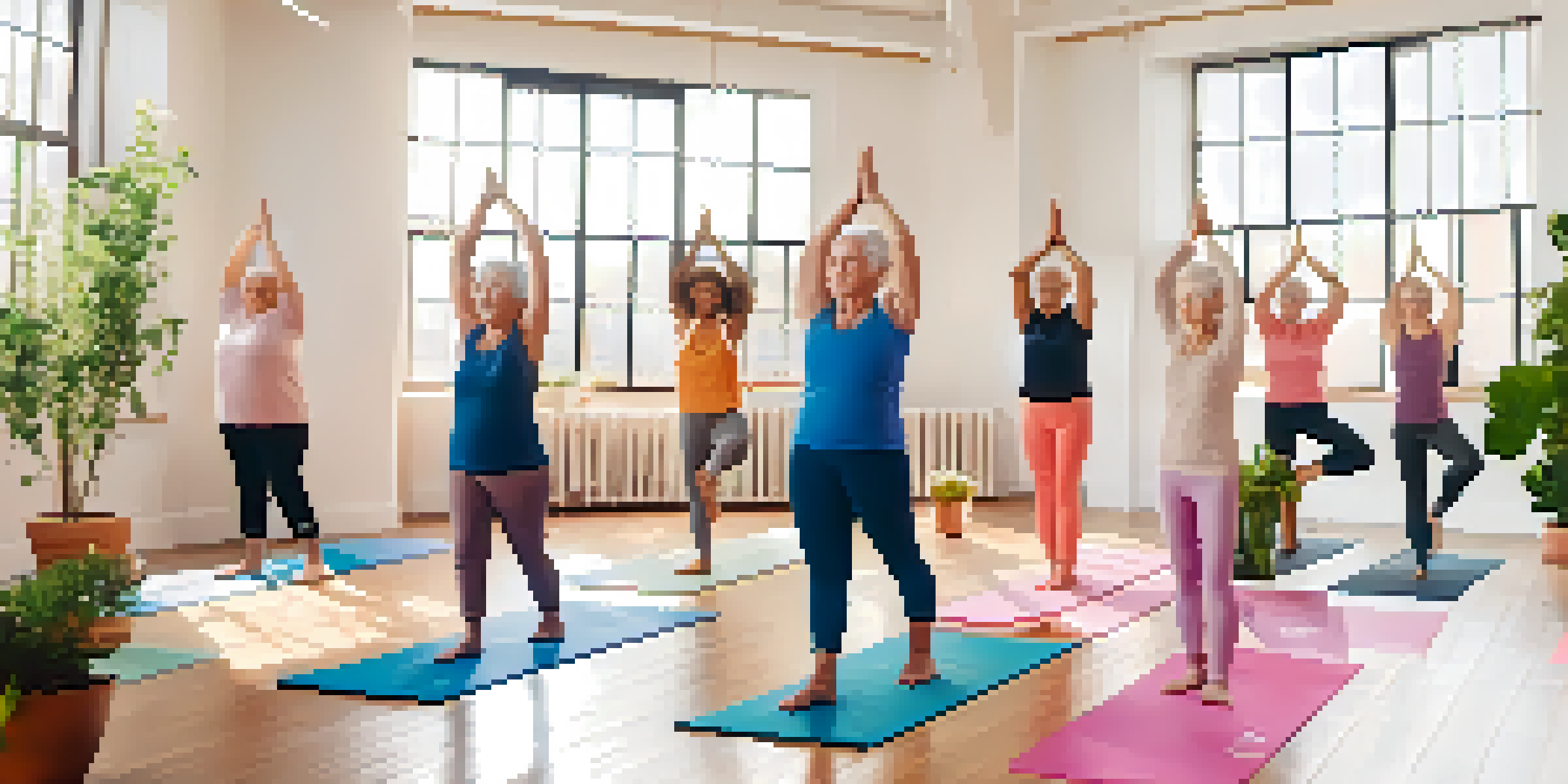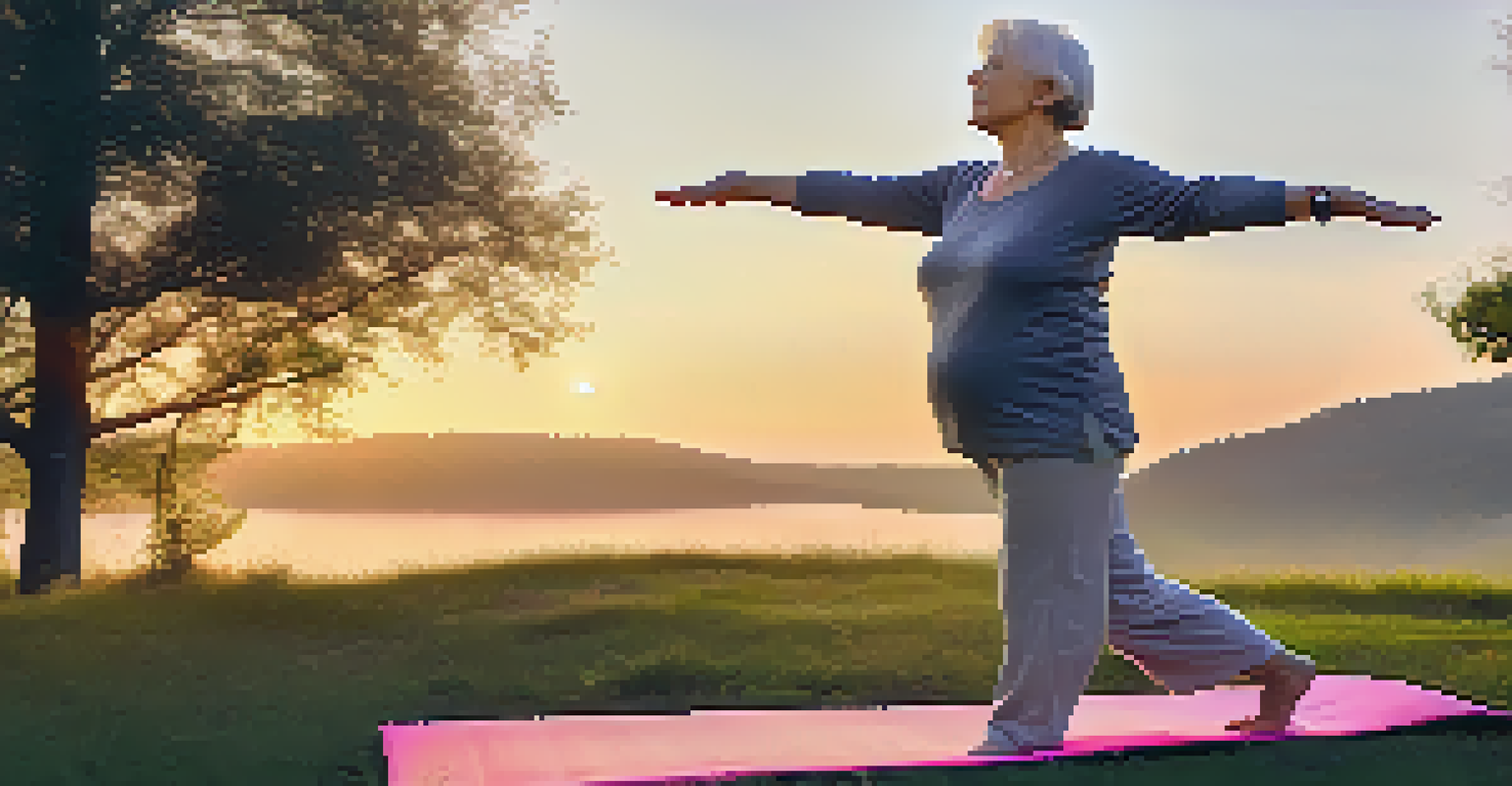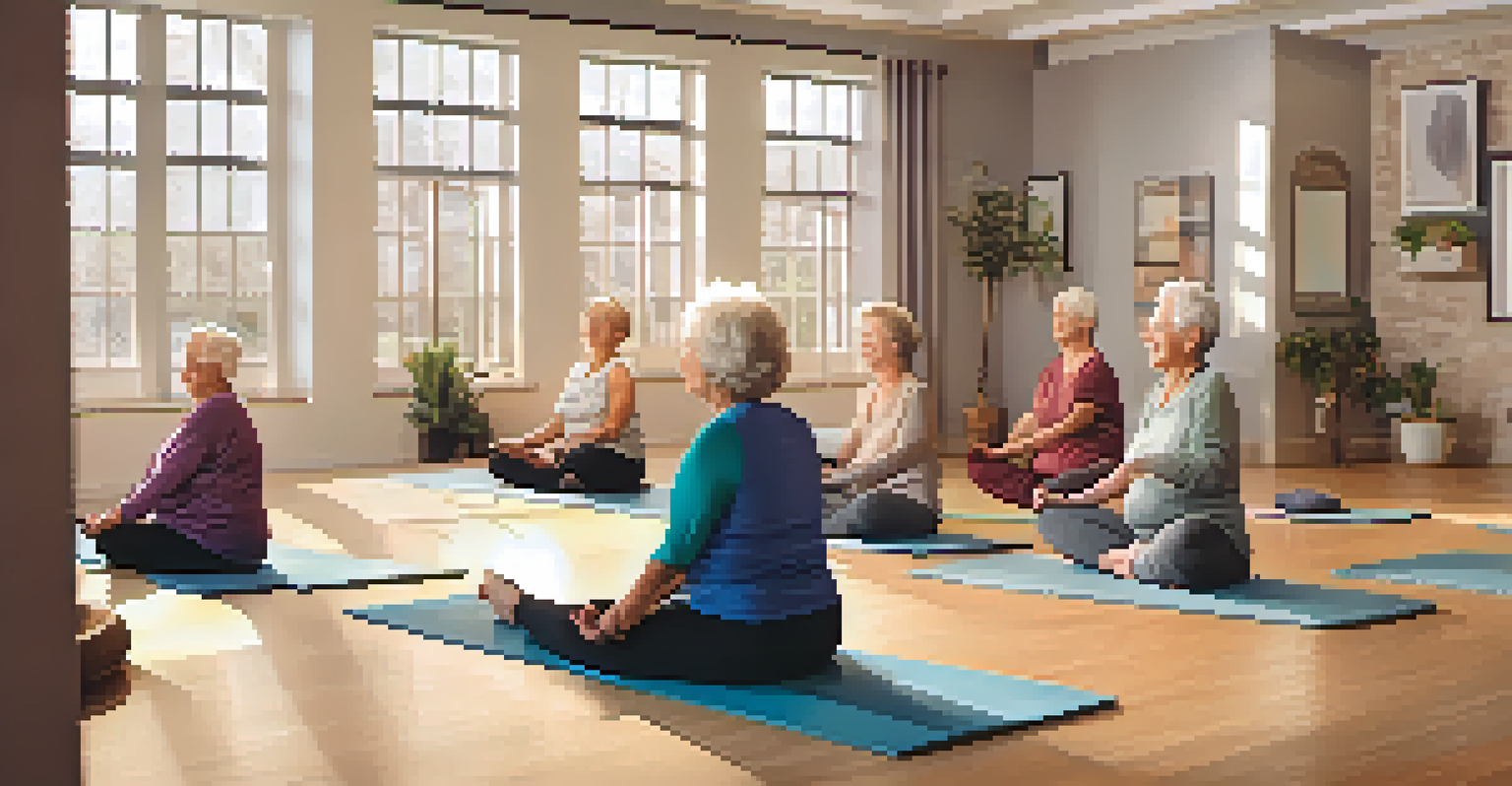Yoga for Seniors: Enhancing Balance and Coordination Skills

The Importance of Balance and Coordination for Seniors
As we age, maintaining balance and coordination becomes increasingly crucial. Falls are a leading cause of injury among seniors, making it essential to find effective ways to enhance stability. Understanding the significance of these skills can motivate seniors to incorporate balance-focused activities into their daily routines.
Balance is not something you find, it's something you create.
Yoga offers a gentle yet effective way to improve balance and coordination. By practicing specific poses, seniors can strengthen their core muscles, which play a vital role in stability. Moreover, yoga encourages mindfulness, helping practitioners become more aware of their body movements and positioning.
Incorporating balance and coordination exercises into a senior's lifestyle can lead to greater independence. As they feel more secure in their movements, seniors are likely to engage in social activities and hobbies, ultimately enhancing their quality of life.
How Yoga Enhances Physical Stability
Yoga is not just about flexibility; it plays a significant role in improving physical stability. Through various poses, seniors can work on their strength and posture, both essential for maintaining balance. For instance, the Tree Pose helps improve focus while strengthening leg muscles.

Each yoga pose engages different muscle groups, encouraging a full-body workout. This variety helps seniors develop a well-rounded physical foundation, which is crucial for preventing falls. Additionally, the controlled movements in yoga promote better coordination between the mind and body.
Balance and Coordination Are Vital
Enhancing balance and coordination can significantly reduce the risk of falls among seniors, leading to greater independence.
Practicing yoga regularly can lead to noticeable improvements in a senior's overall stability. As they progress, they may find daily activities, like walking or climbing stairs, becoming easier and safer.
Mindfulness and Its Role in Balance
Mindfulness is a core principle of yoga, emphasizing the connection between body and mind. For seniors, being present in the moment can enhance their awareness of balance and coordination during activities. This heightened awareness can help them react more quickly to changes in their environment.
The mind is everything. What you think you become.
Incorporating mindfulness into yoga practices allows seniors to focus on their breath and body movements. This focus can lead to improved proprioception, the body's ability to sense its position in space. Better proprioception means seniors can make adjustments more easily, reducing the risk of falls.
Practicing mindfulness through yoga not only improves physical skills but also promotes mental well-being. By reducing stress and anxiety, seniors may feel more confident in their movements, further enhancing their balance and coordination.
Recommended Yoga Poses for Seniors
Several yoga poses are particularly beneficial for enhancing balance and coordination in seniors. The Mountain Pose, for example, helps establish a strong foundation while promoting good posture. It's a simple yet effective way to start a yoga practice.
Another great pose is the Warrior II, which builds strength in the legs while improving focus and stability. This pose encourages seniors to engage their core, which is vital for maintaining balance in daily activities. By gradually increasing the duration of each pose, seniors can notice their improvement over time.
Yoga Boosts Stability and Mindfulness
Practicing yoga helps seniors improve their physical stability and mindfulness, which are essential for better balance and coordination.
Lastly, the Chair Pose is excellent for building lower body strength and enhancing coordination. This pose mimics the action of sitting down, making it a functional exercise that seniors can easily relate to their everyday lives.
Creating a Safe Yoga Environment for Seniors
Safety is paramount when it comes to yoga for seniors. Creating a comfortable space, free from distractions and hazards, allows seniors to focus on their practice. Using props like blocks or straps can also provide additional support, making poses more accessible.
Choosing the right yoga mat is essential as well. A non-slip mat can prevent accidents during poses and provide cushioning for joints. Seniors should also ensure they have enough room to move freely and safely without the risk of bumping into furniture or other obstacles.
Encouraging seniors to practice yoga with a partner or in a group can enhance their experience. Not only does this foster a sense of community, but it also provides additional support and motivation, making it easier to stay committed to their practice.
The Role of Breathwork in Yoga Practice
Breathwork, or pranayama, is a fundamental aspect of yoga that plays a crucial role in enhancing balance and coordination. Learning to control their breath helps seniors stay calm and focused during yoga practice. This focus can translate into improved physical performance and stability.
Working on breath control can also help seniors manage anxiety and stress, both of which can negatively impact their balance. Techniques such as deep breathing or counting breaths can be easily integrated into their practice, leading to a more centered state of mind.
Creating a Safe Yoga Environment
Establishing a safe and supportive yoga space is crucial for seniors to practice effectively and confidently.
By prioritizing breathwork, seniors can create a holistic yoga experience that not only focuses on physical movements but also mental clarity. This balance between body and mind ultimately enhances their overall ability to remain stable and coordinated.
Building a Consistent Yoga Routine
Establishing a consistent yoga routine is key to reaping the benefits of improved balance and coordination. Seniors should aim to practice yoga regularly, even if it's just a few minutes a day. This approach allows for gradual progress and helps solidify the skills they develop.
Setting realistic goals can also keep seniors motivated. Whether it's mastering a specific pose or simply feeling more stable while walking, having clear objectives can make the practice more fulfilling. It's essential to celebrate small victories along the way.

Joining a class specifically designed for seniors can provide structure and encouragement. Being part of a community not only makes yoga more enjoyable but also fosters accountability, ensuring that they stay committed to their practice.